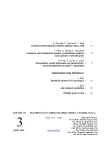The perioperational use of ultrasound examination in penetrating brain injury. Case presentation
Authors:
Michal Filip 1; Petr Linzer 1; Petr Čech 2
Authors‘ workplace:
Neurochirurgické oddělení KNTB Zlín
1; Neurochirurgická klinika FN Ostrava Poruba
2
Published in:
Úraz chir. 18., 2010, č.3
Overview
The objective of the paper:
Attracting the attention to usage of perioperative 2D ultra-sound in operative treatment of brain injuries.
Method:
In neurosurgery the two-dimensional (2D) perioperative ultrasound imaging of tumor lesions has been used for a long time. The case is presented, where perioperative 2D ultrasound imaging was succesfully used for localisation of a nail hidden in the opposite hemisphere. The technique of the examination didn´t differ from imaging of brain tumors. After performing craniotomy an ultrasound probe 4-7MHz was placed under aseptic conditions on the brain. Hyperechoic corpus was visualized at the depth of 2 cm. Following a short ultrasound navigation the foreign body was removed through a limited corticotomy.
Results:
In the postoperative course the clinical condition of the patient improved. Postoperative CT imaging shoved in the region of shoot canal posttraumatic changes only. Secondary complications such as brain abscess didn´t occur.
Conclusion:
In the presented case perioperative ultrasound proved to be an advantageous method of foreign body imaging in the injured brain tissue. Thanks to high-quality of imaging a removal of foreign body without additional com-plications was possible.
Key word:
Penetrating brain injury, foreign body, two-dimensional ultrasound.
Sources
1. Bullock, M. R, Chesnut, R, Ghajar, J. et al. Guidelines for the surgical management of traumatic brain injury. Neurosurgery. 2006, 58 (Suppl), 25–46.
2. Filip, M., Paleček, T., Starý, M. et al. Ultraz-vukový peroperační monitoring glioblastomů v 2D obraze a reálném čase. Čes a Slov Neurol a Neurochir. 2004, 67/100, 42–47.
3. Gronningsaeter, A., Unsgård, G., Omme-dal, S. et al. Ultrasound-guided Neurosurgery. A feasibility study in the 3-30 MHz frequency range. J Neurosurg. 1996, 10, 161–168.
4. Gronningsaeter, A., Kleven, A., Omme-dal, S. et al. SonoWand an Ultrasound-based Neuronavigation System. Neurosurgery. 2000, 47, 1373–1378.
5. Hata, N., Dohi, T., Iseki, H., Takakura, K. Development of a frameless and armless stereotactic neuronavigation system with ultrasonographic registration. Neurosurgery. 1997, 41, 608–614.
6. Hirschberg, H., Unsgaard, G. Incorporation of ultrasonic imaging in an optically coupled frameless stereotactic system. Acta Neurochir Suppl (Wien) 1997, 68, 75–80.
7. Chandler, W.F., Knake, J.E., McGilli-cuddy, J.E. et al. Intraoperative use of real-time ultrasonography in neurosurgery. J Neurosurg. 1982, 57, 157–163.
8. Koivukangas, J., Louhisalmi, Y., Alakui-jala, J., Oikarinen, J. Ultrasound-controlled neuronavigator-guided brain surgery. J Neurosurg. 1993, 79, 36–42.
9. Přibáň, V., Řehoušek, P., Fiedler, J. Postavení dekompresivní kraniektomie v chirurgické léčbě mozkových poranění – zhodnocení výsledků z období 2002–2004. Úraz chir. 2008, 16, 27–33.
10. Rubin, J., Dohrmann, G. Intraoperative neurosurgical ultrasound in the localization and characterisation of intracranial masses. Radiology. 1983, 148, 173–175.
11. Školoudík, D., Majvald, Č., Chudoba, V. Možnosti diagnostiky tkáňových lézí mozku pomocí ultrazvuku. Čes a Slov Neurol Neurochir. 1999, 3, 135–140.
12. Voorhies, R.M., Engen, I., Gamache, F. In-traoperative localisation of subcortical brain tumors: further experience with B mode real time sector scanning. Neurosurgery. 1983, 12, 189–193.
13. Unsgård, G., Kleven, A., Ommedal, S., Gronningsaeter, A. Intraoperative ultrasound and neuronavigation. European Congress of Neuro-surgery: 1999, Presented at September - 19–24, Copenhagen, Denmark.
14. Tanaka, K., Ito K, Wagai, T. The localisation of brain tumors by ultrasonic techniques. J Neuro-surg. 1965, 23, 135–147.
Labels
Surgery Traumatology Trauma surgeryArticle was published in
Trauma Surgery

2010 Issue 3
Most read in this issue
- Treatment of simple separation of distal radial epiphysis in children
- Do we know ATLS principles?
- Anatomy of ligaments of the prenatal ankle joint and its clinical relevance
- The perioperational use of ultrasound examination in penetrating brain injury. Case presentation
